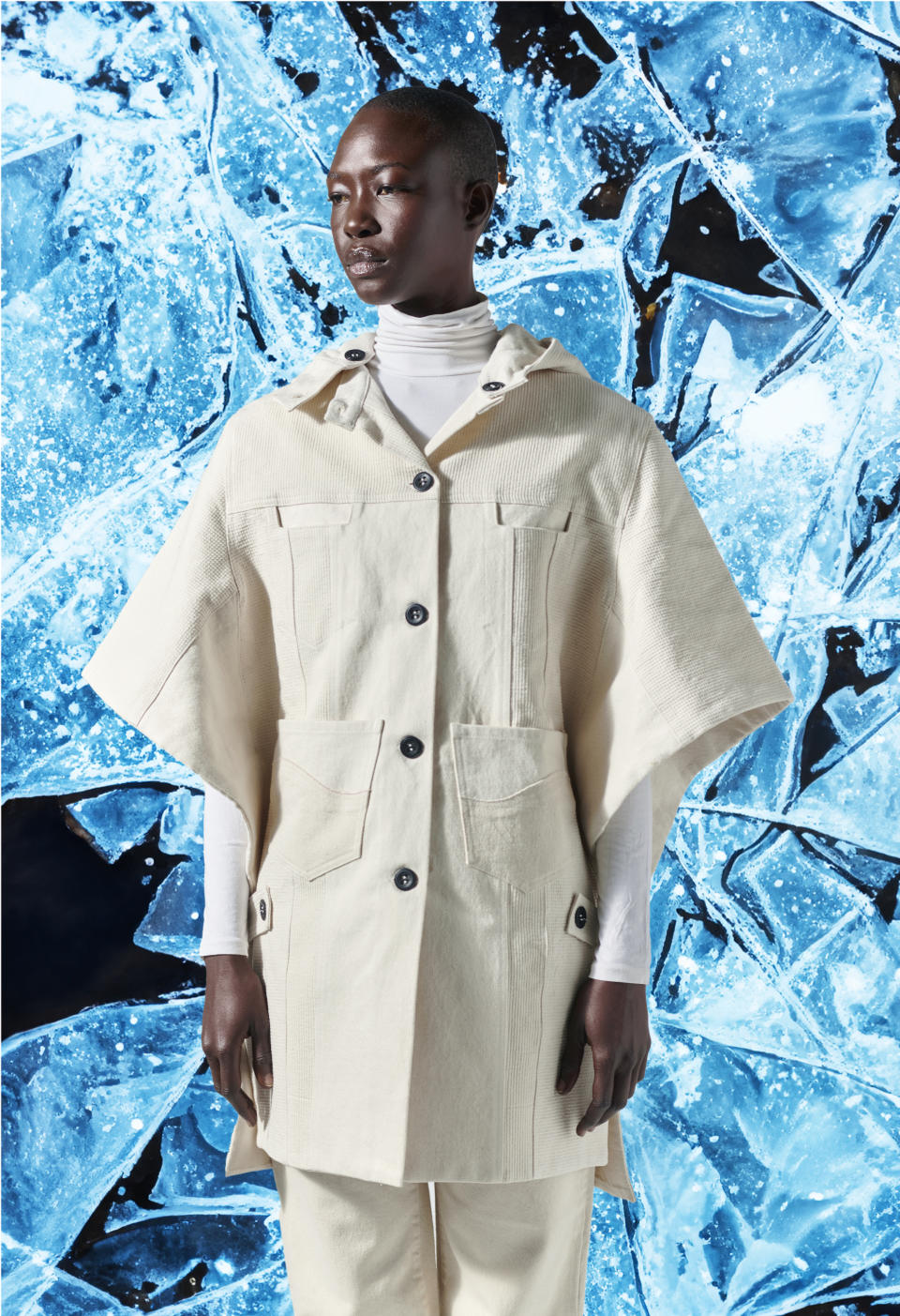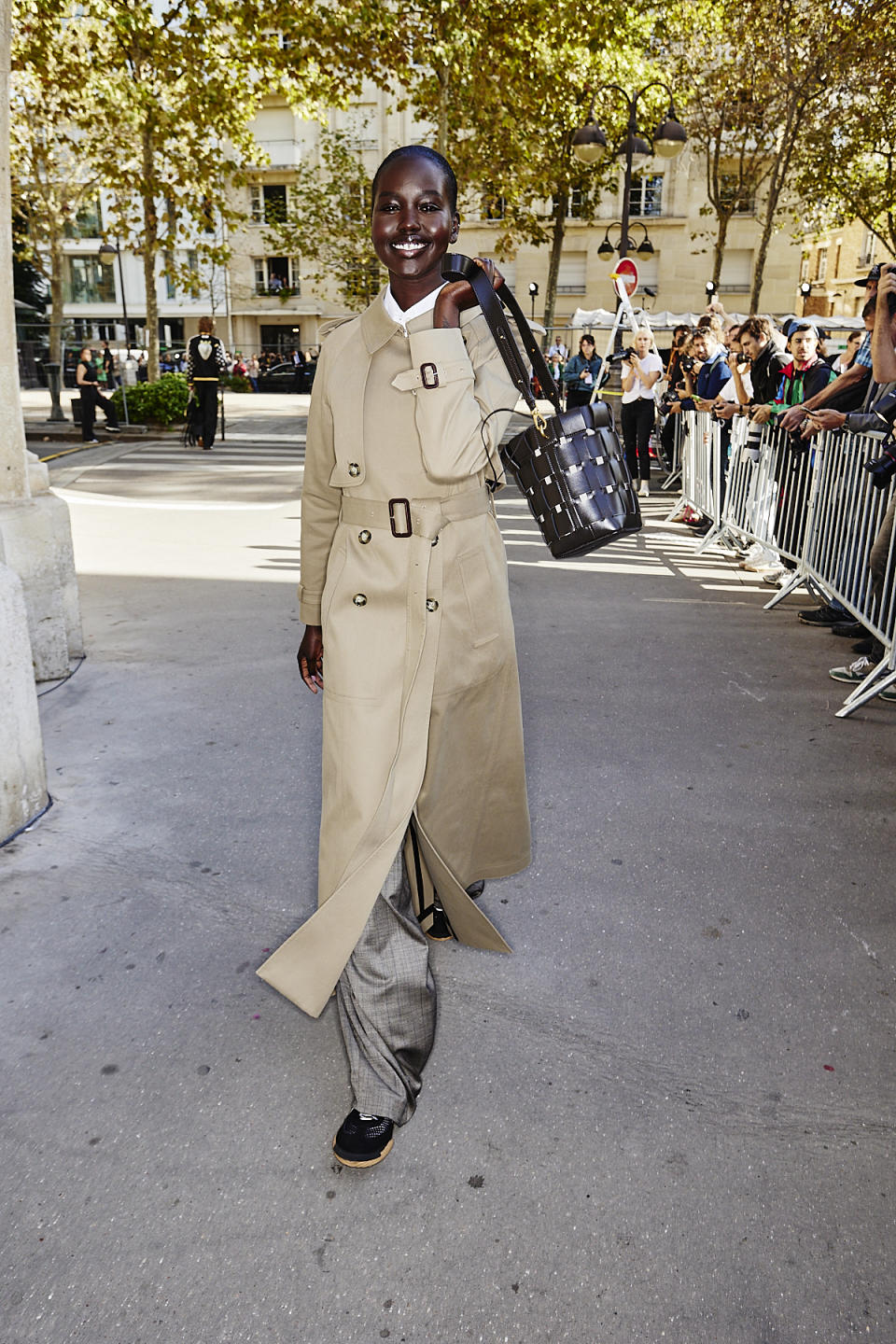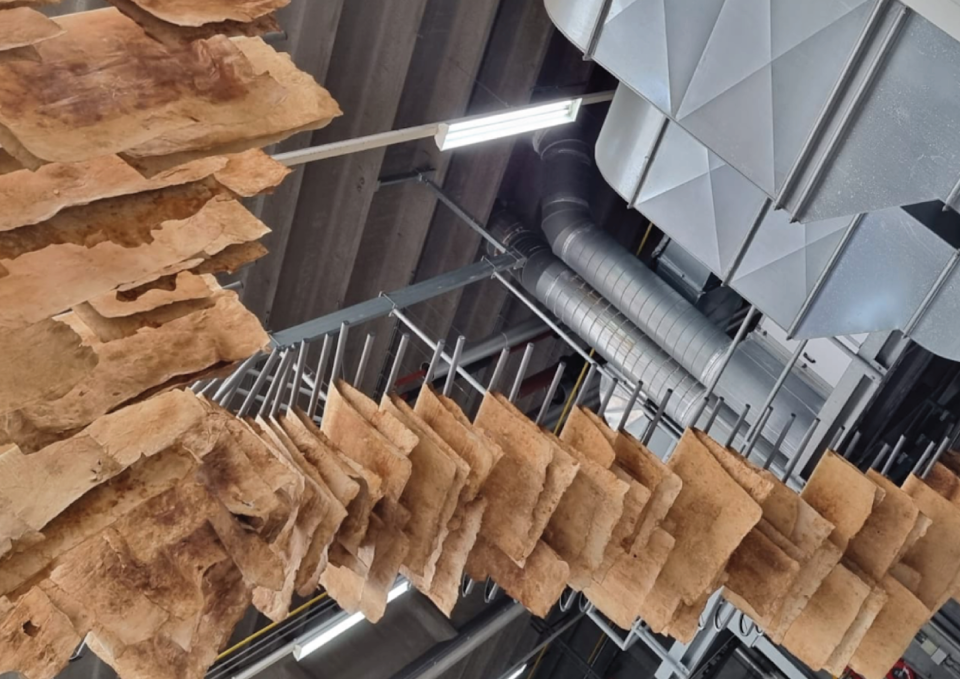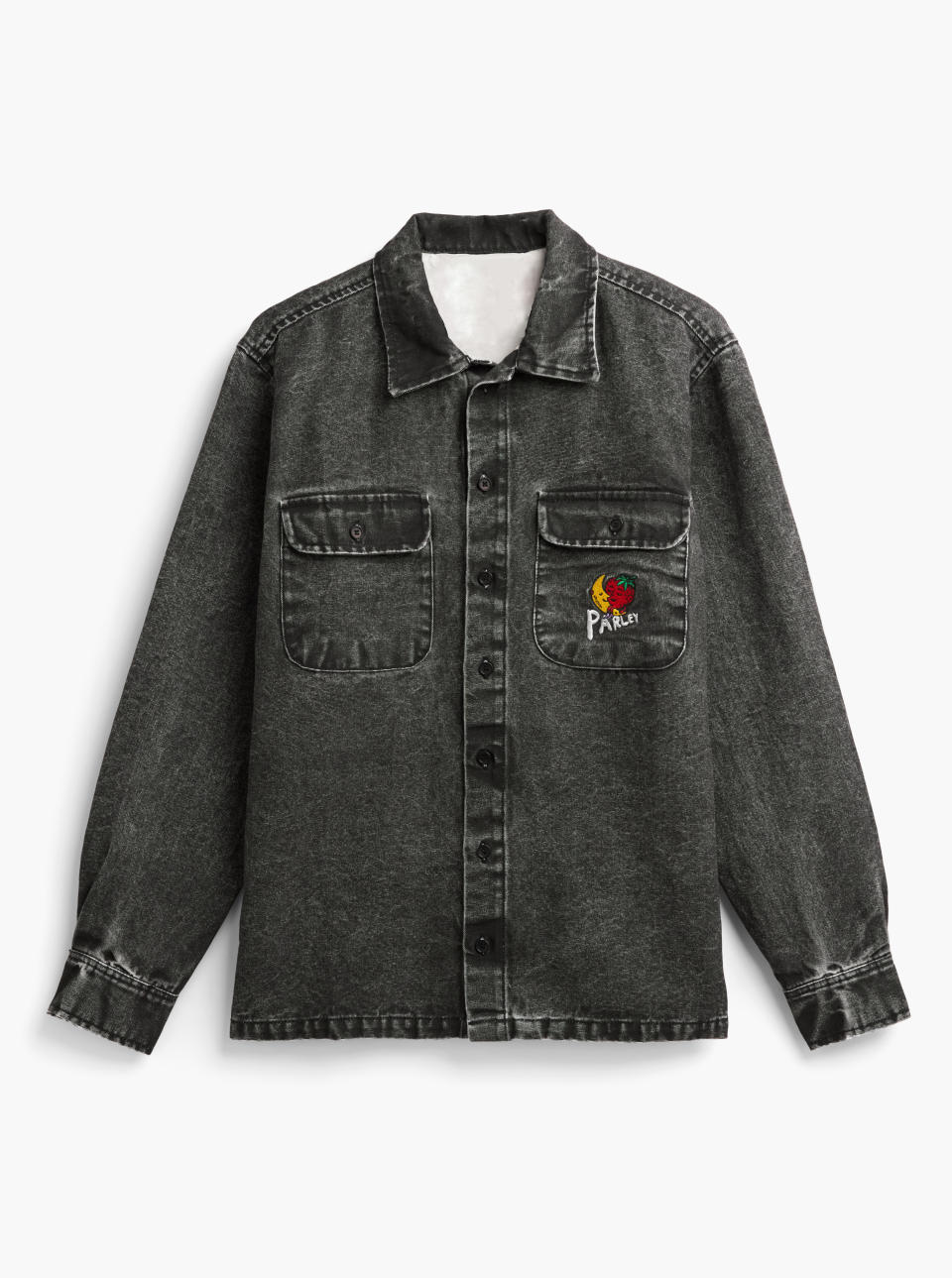Algae and Algebra: Green Textile Innovators Face Investment, Pricing Challenges as They Scale

LONDON — Scientists, engineers and entrepreneurs are working wonders with natural materials including algae, seaweed, mycelium and chitosan, but while R&D may be advancing quickly, so are the challenges around scaling and financing these innovative businesses.
The Future Fabrics Expo, which ran Tuesday and Wednesday in London, was a wonderland of invention and creative thinking, with 250 companies taking part across the fashion, footwear and home furnishings sectors.
More from WWD
Lanvin Goes for Experience, Taps Peter Copping as Artistic Director
Celebrities Front Row at Balenciaga Fall 2024 Couture: Katy Perry, Michelle Yeoh and More
Getting Ready for Balenciaga Couture Fall 2024 With Michelle Yeoh
Some 75 companies had their own stands, with the fair divided between innovators focused on R&D and companies offering immediate solutions to the 2,000 designers, entrepreneurs and press attending.
Among the exhibitors was Soarce, which is whipping seaweed into protective coatings and leather alternatives for shoes, and Lenzing, which is crafting blankets to protect Europe’s glaciers, and later spinning the used material into cool designs.

Beyond Surface Technologies is working with a micro algae-based oil that helps fabric to absorb moisture and transport it away from the body. The company has also come up with a water-repellent, plant-based wax extracted from the candelilla plant, which is found in the North American desert.
Pelinova, meanwhile, is shredding old leather and fusing it with Tencel-branded fabric to create more alternatives to leather. The company has been working with Ganni to make boots, although the material can be used for bags, wallets, shoes and a variety of accessories.
HeiQ, which inked a multimillion-dollar deal with Hugo Boss in 2022, showed off biodegradable streetwear shoes using AeoniQ, its carbon-zapping and recyclable fabric.
Ecovative, one of the first movers in the alternative textiles space, is continuing its mission to replace plastics with lab-grown mycelium, or fungus roots. It works directly with tanneries which transform the raw material into leather alternatives.
While there is no shortage of great ideas, companies large and small are facing the challenges of how to scale and bring their prices down.
“Our next challenge is acceleration and scale,” with regard to everything — circularity, biodiversity, transparency and traceability, said Alexandre Capelli, deputy director of environmental development at LVMH Moët Hennessy Louis Vuitton.
At the fair, Capelli was surrounded by the fruit of the group’s recent projects, including the collaboration between Stella McCartney and Veuve Clicquot, which resulted in a grape-based leather alternative for handbags.

Also on display were the Louis Vuitton trainer and LV Charlie sneaker, both of which incorporate a high percentage of recycled and bio-sourced materials.
There were also items from the Loewe Recraft service, and ones designed by Kevin Germanier for Prélude. The collection is made from 100 percent upcycled materials from LVMH houses, part of a new circularity initiative that intends to repurpose unsold goods.
Even if companies are able to scale their inventions, the products are costly to manufacture at a time of tepid demand, high interest rates, and an ongoing cost-of-living crisis.
On the first day of the fair, Canopy tried to address part of the money issue, hosting a seminar aimed at getting investors interested in alternative fibers. Called “Getting Real on Price: What It’s Going to Take to Scale Next Gen,” speakers included Nicole Rycroft, founder and executive director of Canopy, and Gagan Bansal of H&M Group.
Steven Price, vice president of business development at Chargeurs UK, said price is a big consideration, especially for mass and middle-market clients.
Chargeurs provides interlinings, and Nativa provides sustainable natural fibers for clothing production. The company uses wool and works directly with farmers worldwide.
“For us, it’s hard to sell to a lot of the big high street retailers,” said Price, adding that niche and higher-end brands take a different approach. “They are much more conscious, and prepared to pay that little bit extra.”
The company also has a regenerative agriculture program and collaborates with brands that belong to LVMH and Kering.
While regenerative agriculture is the way forward for many companies, it doesn’t come cheaply.

LVMH, and Stella McCartney in particular, work closely with Söktas, a specialist maker of cotton and cotton-blended shirting fabrics from Turkey. Söktas is a big advocate of this type of agriculture, which treats the soil with care, enables carbon capture, and promotes fertility, biodiversity and water storage capacity.
The company launched its inaugural regenerative cotton project in 2019, encouraged by McCartney, and has continued to expand year-on-year with the ongoing support of LVMH.
From the farmers’ point of view, however, it’s an expensive, long-term proposition that requires upfront investment in new machinery, the disposal of traditional tillage equipment, technical assistance and monitoring.
“Over the course of four years, we’ve been able to convince two farmers to make the change,” said Seyhan Aktemur, chief commercial officer at Söktas. She described the transition to regenerative agriculture as a “five-year journey, with amazing outcomes,” but acknowledged that many farmers don’t have the resources to make the change.
For some companies, even when the scale is there, costs are a constraint.
Hannes Schoenegger, cofounder of Bananatex, which makes denim and other fabrics from banana fiber, said the company could produce 10 times more than it does currently thanks to the industrial facilities of its supply chain partners.
“But when you compare [our textiles] to organic cotton, we are about twice as expensive,” he said, adding that the challenges of doing business are around price rather than scale. Current partners include luxury companies such as Balenciaga, where it helped to create a pair of triple-S trainers; Stella McCartney; Tommy Hilfiger, and MCM.
During the fair Bananatex showcased its new denim fabric made with its partner in Taiwan. “We’re using bio indigo to dye, and there is a certain darkness you can achieve with it, which is not the same that you see with synthetic dyes,” he said.
The fiber is sourced from the Musa textilis banana, which grows either in the wild or as a part of a cultivation program in areas being reforested in the Philippines, and the overall carbon footprint resulting from production is low.

Lenzing and Parley for the Oceans were focused this year on plastic-blasting. Lenzing showcased a project that saw it transform geotextiles used to protect glaciers into fabric used for clothing.
The Austrian chemical company has created geotextiles made from biodegradable Lenzing fibers to protect Europe’s glaciers. Until recently, those glaciers have been covered with plastic “blankets,” of all things, to keep them from melting.
Lenzing, and others, could not abide the thought of micro-plastics leaching into the glaciers, and knew it could do better. It created an alternative, non-woven fabric made from wood pulp to cover the glacier. When those blankets start to biodegrade, Lenzing plans to recycle them into yarns for clothing fabrics.
During the fair, the company showed off a pilot project: a cream cotton denim workwear jacket made from recycled glacier covers, and with help from a series of partners including Marchi & Fildi Spa, a specialist in the field of mechanical recycling; the denim fabric manufacturer Candiani Denim, and the avant-garde fashion studio Blue of a Kind.
Earlier this year Lenzing presented its project “Glacial Threads: From Forests to Future Textiles” as part of the International Day of Forests celebrations at the Palais des Nations, United Nations Office, Geneva.
Florian Heubrandner, executive vice president, commercial textiles at Lenzing, described the collaboration as “a testament to the power of partnership; driving innovation and sustainability, reducing environmental impact, and encouraging collaborative action against climate change for global impact across the textile industry.”

Parley for the Oceans has for years been on a mission to transform plastic and is expanding into natural and bio-based ingredients for clothing designs and collaborations.
Remi Macario, fashion collaboration director at Parley, showed off a puffer jacket that uses Parley ocean plastic for the shell and BioPuff, a regenerative fiber sourced from Broadleaf Cattail, a perennial aquatic plant, inside.
As part of a ready-to-wear collaboration with Sky High Farm Universe, it also recreated a leather jacket in chitosan, a fibrous sugar that comes from the outer skeleton of shellfish.
It also made jackets and trousers from Bananatex fiber, black wood waste-based pigments and stonewashed it for effect.
Macario believes that Parley has unlimited opportunity to apply its experience and research into transforming plastic to developing biomaterials.
These innovators will have a second chance to strut their stuff, and argue the case for scale, and funding, during a U.S. Future Fabrics Expo scheduled to take place later this year in Manhattan’s Garment District, with four times as many exhibitors as last year.
Best of WWD

 Yahoo Finance
Yahoo Finance 